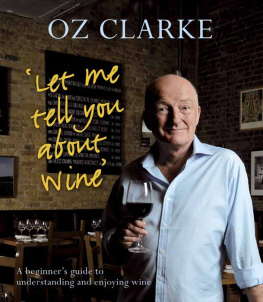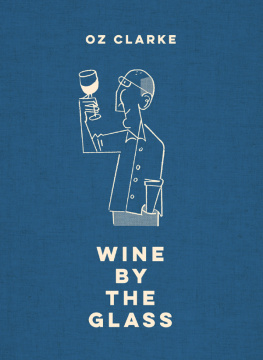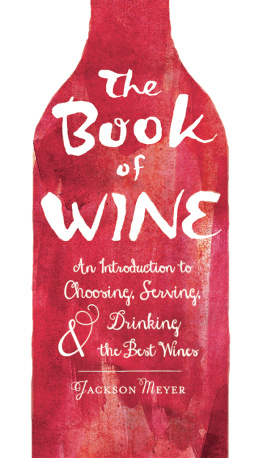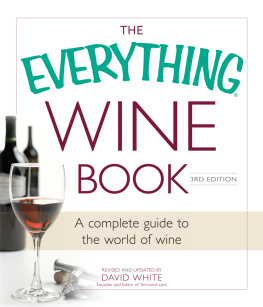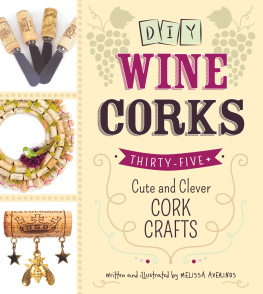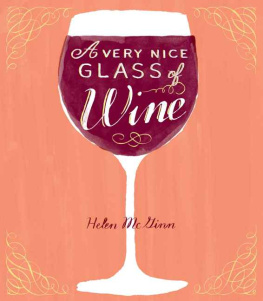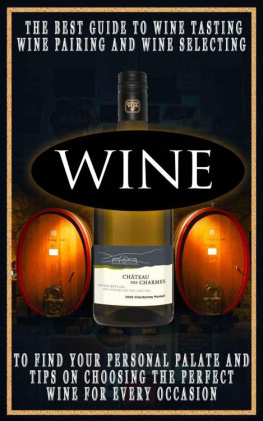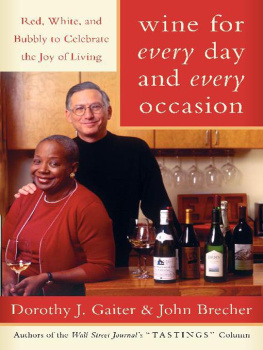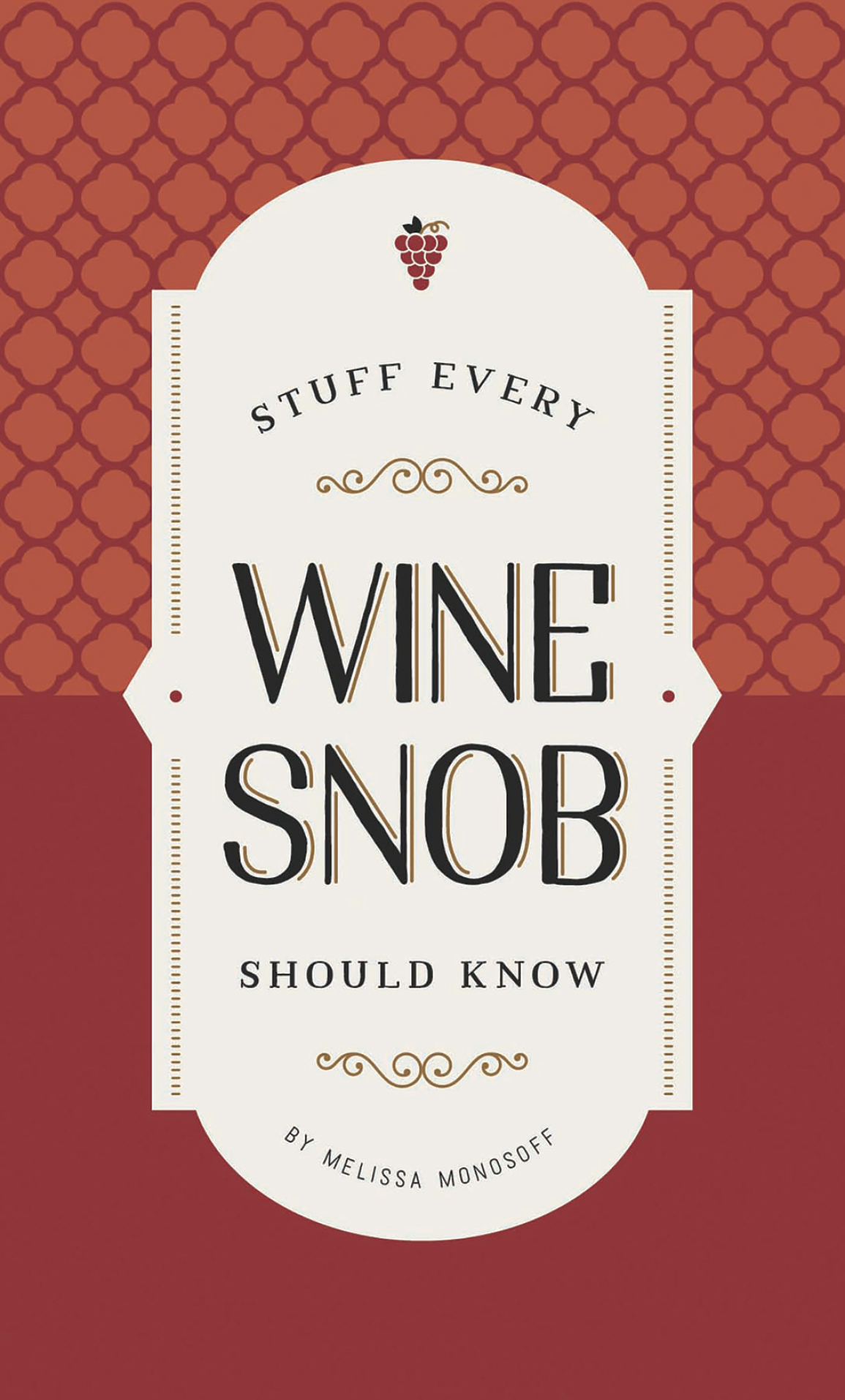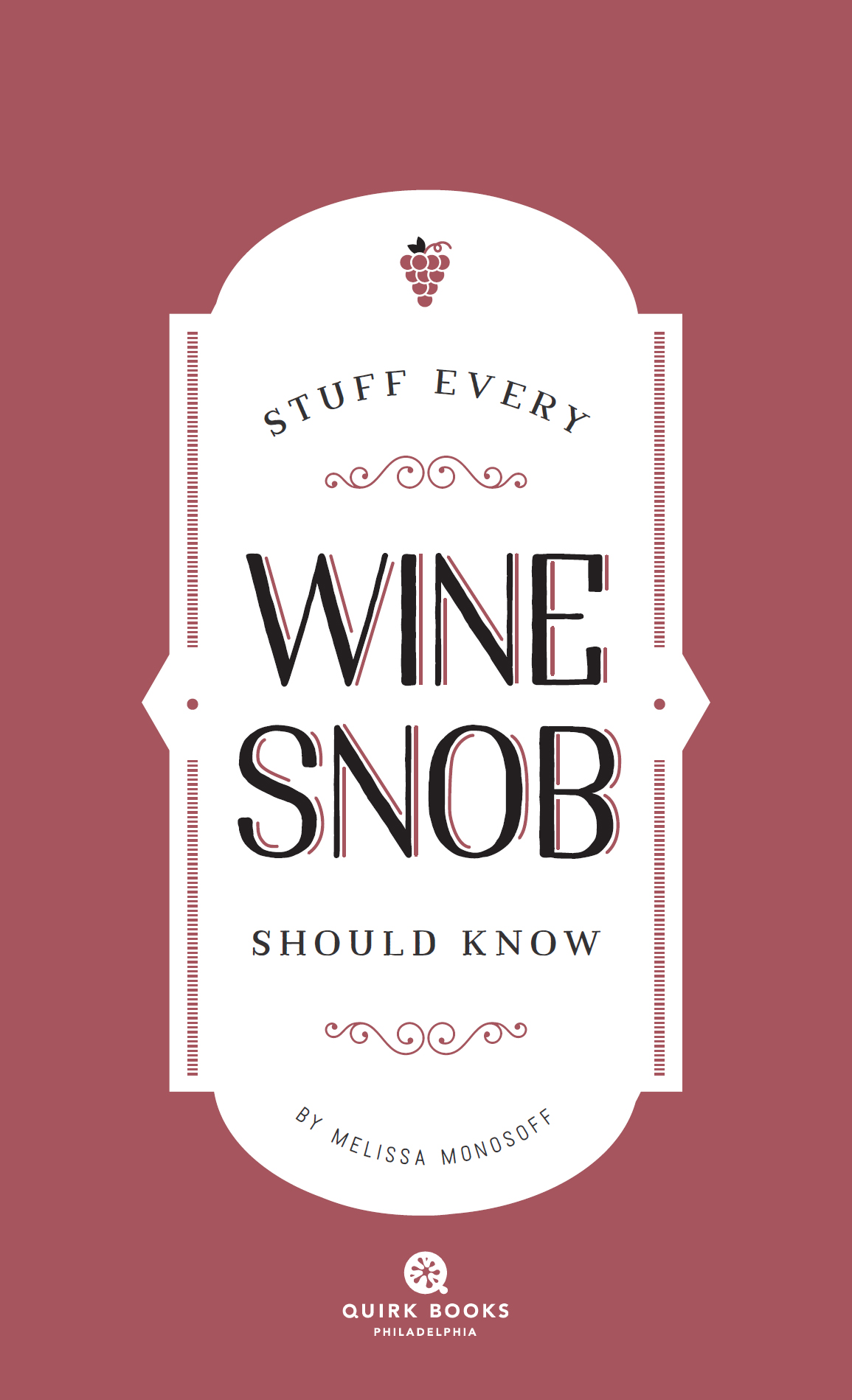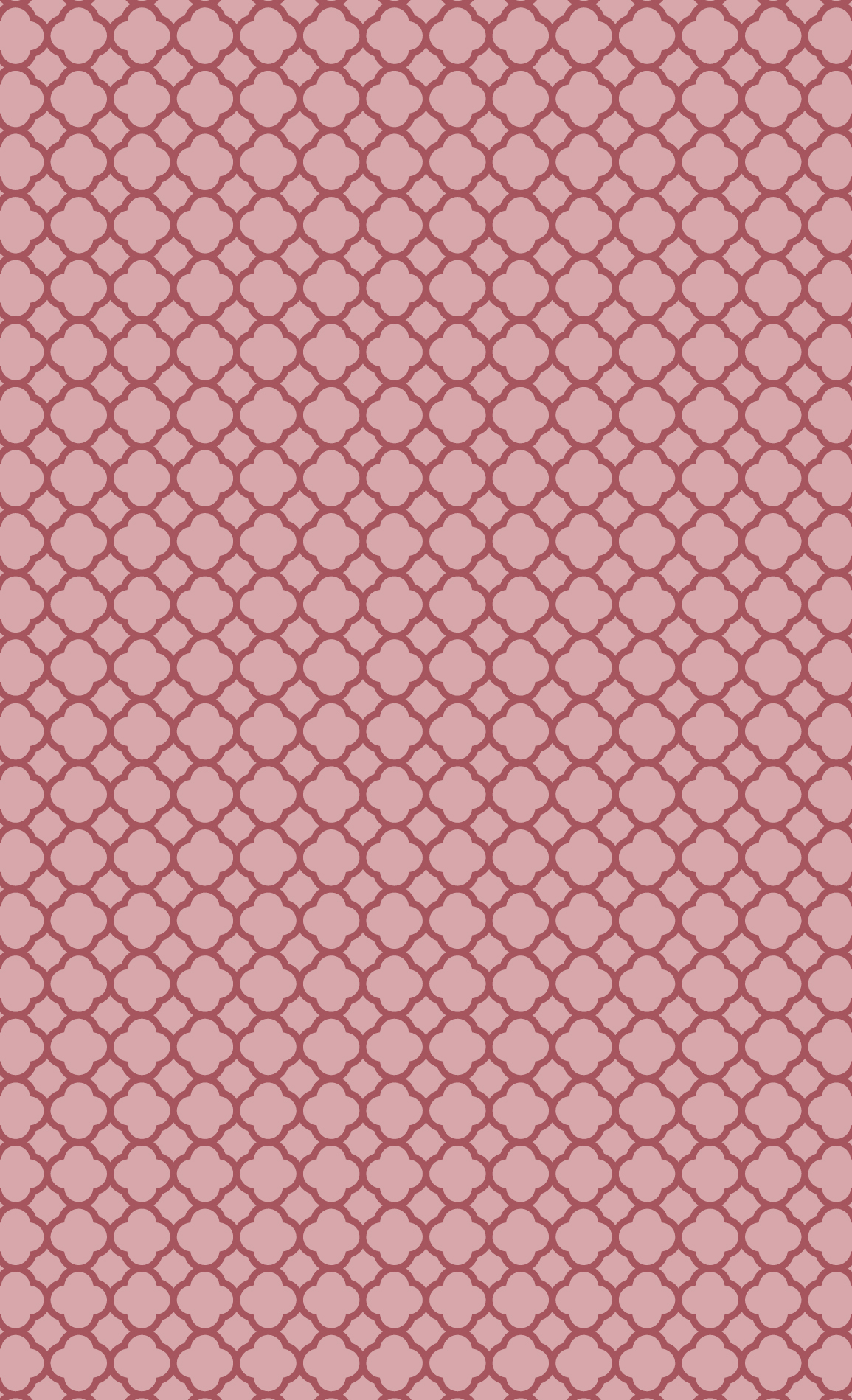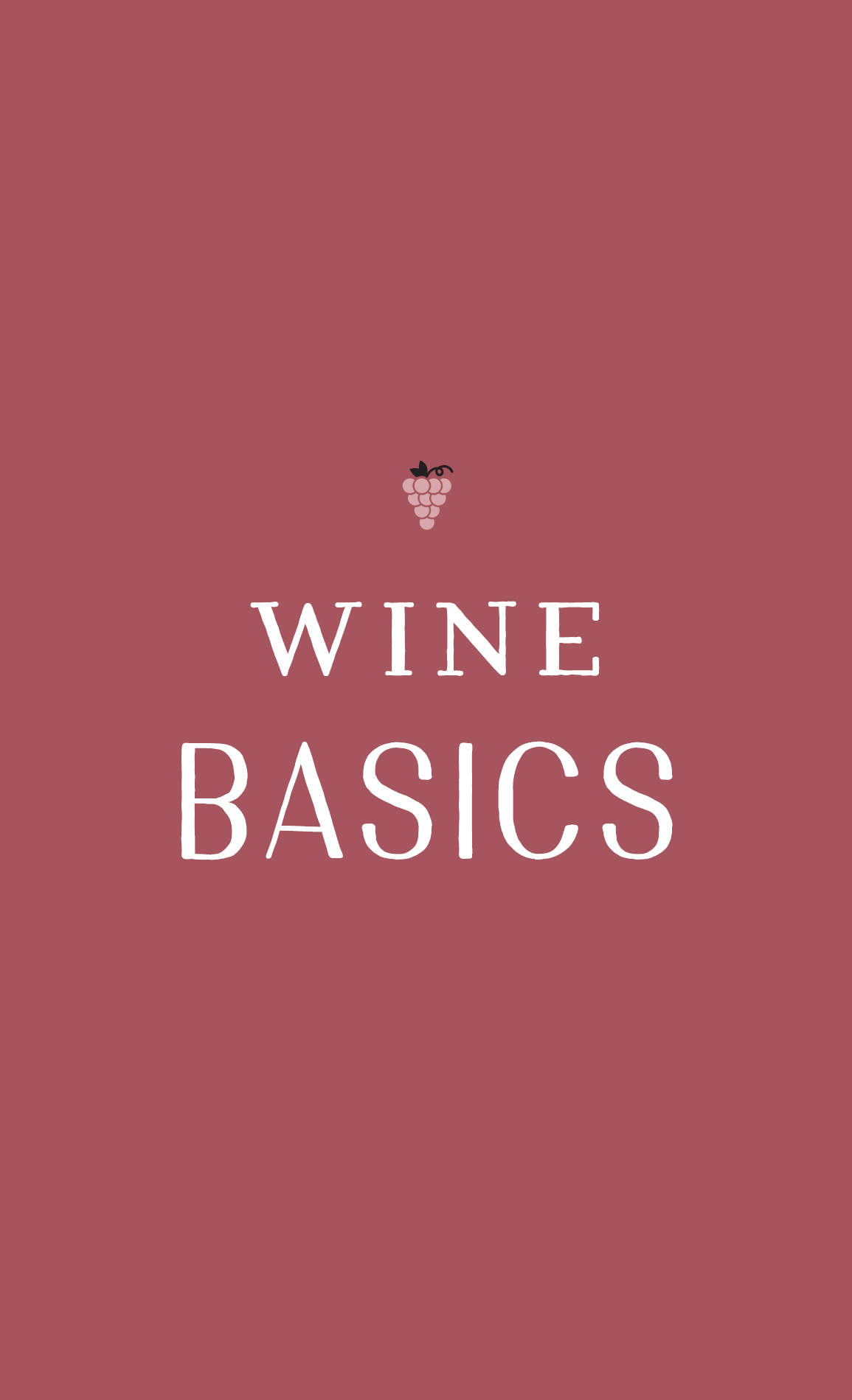Copyright 2018 by Quirk Productions, Inc.
All rights reserved. Except as authorized under U.S. copyright law, no part of this book may be reproduced in any form without written permission from the publisher.
Production management by John J. McGurk
Introduction
I fell in love with wine when I was a student at the Culinary Institute of America. It was the first subject I was addicted to knowing everything about. What a revelation that a simple glass of wine was so much more: a time, a place, a person, a piece of ground, a war, history, geology, chemistry, biology, botany, enologyand the list goes on!
In the beginning, I loved studying wine, but I didnt like drinking it much. Given that, until then, my wine experience was Manischewitz on Passover, most likely from last years bottle still sitting on the lazy Susan, this is hardly surprising. (I often showed off to my friends by sneaking one of the adult plastic cups of wine at the synagogue and pouring it into a kids cup. I thought I was getting away with the crime of the century!)
So it took me a while to get used to the taste and structure of classic wines. However, as my culinary world widened, my palate developed. Today, the mouth-numbing tannins of a great Barolo and the mouth-puckering tartness of beautiful Champagne are some of my very favorite things in this world.
But what really keeps me in love is the magic in wine: how it brings people together to share a common experience. Wine can be studied, of course, but it can also be a major contributor to our emotions, memories, social interactions, and connections. Just the name of a variety or the sight of a bottle can be enough to transport you to a specific time and place or call to mind a special person or event.
Most of all, wine is an avenue to adventure and a lifetime of learning. I hope this book provides some inspiration for fun, exploration, and experimentation. We will take a peek into the immense world of wine with a bit of history, as well as information on how different styles are made, major growing regions, grape varieties, how to taste wine, and how to pair wine with food. Plus some pro tips from a master sommelier (moi) on how to survive at restaurants that have encyclopedic wine lists.
Remember: its just wineso lets have some fun. Sant!
Highlights from Wine History
As one of the worlds oldest beverages, wine has quite the historical pedigree. Here are some landmark dates in the evolution of our favorite drink.
Ca. 7000 BCE: First evidence of wine production: Chinese pottery shards later discovered in Henan province show residue of wine made from both grapes and rice.
Ca. 4100 BCE: Approximate date of first known winery, located in the Areni-1 cave in Armenia.
Ca. 3000 BCE: Royal wine making begins in Egypt, with grapes likely crushed by foot.
Ca. 300 BCE: Ancient Greek writer Theophrastus describes contemporary wine-making practices, including complex pairings of soil types with grape varieties and methods for minimizing yields (and thereby concentrating flavor).
121 BCE: Year of the so-called Opimian vintage of Roman wine, prized into the next century for its supreme quality.
71 CE: The first vineyards are planted in Bordeaux by Romans, possibly from cuttings from the Rioja region of Spain.
77 CE: Pliny the Elder publishes his Naturalis Historia, the text from which the phrase in vino veritas (in wine, there is truth) is adapted.
79 CE: Mount Vesuvius erupts, destroying the city of Pompeii and interrupting trade, causing wine to become scarce and prices for it to soar.
Ca. 200 CE: Romans begin to use the screw press to crush grapes.
1152 CE: The marriage of Henry II of England and Eleanor of Aquitaine causes a spike in the cost of Bordeaux wines.
1435: Count John IV of Katzenelnbogen plants the first riesling grapes near Frankfurt, Germany.
1524: Vineyards are established in Mexico by Spanish settlers.
1630: Sir Kenelm Digby begins to manufacture glass wine bottles sturdy and strong enough for general use.
1685: Simon van der Stel, governor of the Dutch Cape Colony in the Cape of Good Hope, South Africa, founds what is now Groot Constantia, the countrys oldest winery.
1718: Benedictine monk Dom Prignons winemaking rules are published.
1788: Wine cuttings are brought to New South Wales, Australia (then a penal colony), from South Africa.
1798: First Vineyard, Americas first commercial winery, is established by John DuFour in Nicholasville, Kentucky.
1863: The great French wine blight, which would destroy 40 percent of French vineyards by the mid-1870s, begins.
1851: Chilean industrialist Silvestre Ochagavia imports cuttings of French vines to cultivate in his own country.
1920: Prohibition, the nationwide ban on alcohol in the United States, takes effect until 1933; during this period, more than 2,000 American wineries are shuttered.
1935: Frances Comit national des appellations dorigine is created to standardize and regulate the naming of wines for specific regions.
1935: Australian Thomas Angove invents a cask wine (aka boxed wine) container consisting of a polyethylene bladder housed in a corrugated cardboard box.
1976: The so-called Judgment of Paris competition is held, at which French wine judges declare California-made cabernet sauvignon and chardonnay superior to those made in France.
1980s: New Zealand sauvignon blanc puts the country on the map as a producer of high-quality wines.
Terms Every Wine Snob Should Know
Need to brush up on your oenophile speak? Here are the terms youll need to know.
Acidity: One of the five taste sensations. Acidity in wine activates the salivary glands and creates a sour or tart sensation and enlivening, refreshing, and crisp quality.
Aeration: Exposing wine to oxygen to release aromas and flavors (aka letting the wine breathe)
Alcohol: Ethanol (ethyl alcohol); the product of fermentation of sugars by yeast
Appellation: A delimited wine-producing region, i.e., a place with a protected name
Astringent: A tasting term noting the harsh, bitter, and drying sensations in the mouth caused by high levels of tannin


